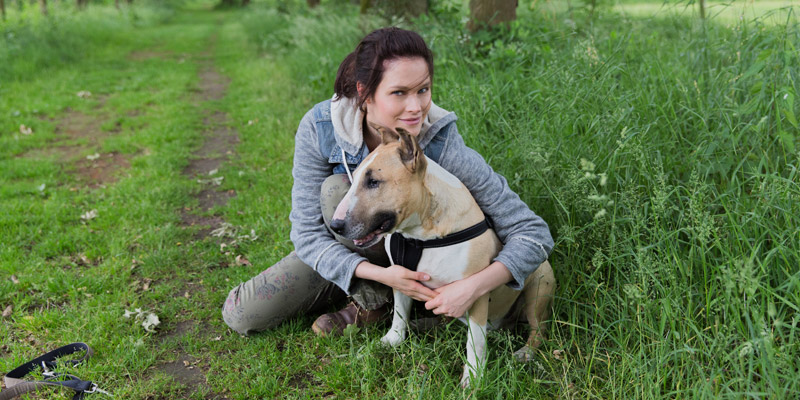The evolution of the canine diet has changed dramatically over the years. From eating garbage and leftovers to eating the latest and greatest overpriced diet trends, dog nutrition has come a long way. As is the current trend in human dieting, dog food is also finally making its way back to its roots- unprocessed, real, whole food.
After countless pet food recalls bringing to light what was really in those processed commercial foods, pet owners are finally questioning what they should be feeding their dogs. Why were we feeding our canine companions a diet of over 60% carbohydrates sourced from corn? Was it always that way?
Here’s a little history on the evolution of the canine diet and what you really should be feeding your dog.
Back in the Day…
The very first commercial dog food didn’t come about until the early 1800’s.  Before that, dogs were eating our leftovers or garbage, the food that we either wouldn’t or couldn’t eat ourselves. Initially, commercial dog food was geared exclusively towards wealthy sportsmen. It wasn’t until much later, in the 1950’s, that commercial pet food became the norm in most every household.
Before that, dogs were eating our leftovers or garbage, the food that we either wouldn’t or couldn’t eat ourselves. Initially, commercial dog food was geared exclusively towards wealthy sportsmen. It wasn’t until much later, in the 1950’s, that commercial pet food became the norm in most every household.
While early commercial pet food was made up of mainly real meat, it was still the poorer quality cuts that we wouldn’t eat ourselves. In the 1970’s, in an effort to cut costs, grains became more and more prominent in dog food. At first, wheat was being used, but this quickly shifted to the cheaper grain source of corn. All of a sudden, commercial dog food was 60% carbohydrates- and poor quality carbohydrates at that!
The First Recall
2006 marked the first major pet food recall. Manufacturers were sourcing their ingredients from the cheapest suppliers possible, resulting in many canine deaths. For the first time, pet owners were realizing how little they actually knew about what was in their dog’s food. People began questioning what brands they could trust. They began reading the ingredient labels and asking tough questions. As a result, many dietary theories rose in popularity, including homemade dog food, grain-free diets and even raw food for dogs, coined the ancestral diet for dogs.
What Should You Feed Your Dog?
So, what should you feed your four-legged friend? There are so many options now that it can be an overwhelming decision. I have been cooking for my dogs for years now and can attest to the dramatic health improvements it has brought for both of them. But before you start cooking a simple mix of rice and chicken for you dog, know that finding the right recipe for your pet is crucial (and takes work).
A good commercial diet is always better than a poorly designed homemade diet.
A lot goes in to creating a well-balanced meal that has the right ratio of macronutrients as well as the perfect balance of vitamins and minerals. Ignoring these important factors when creating your own recipe can result in severe deficiencies in your pet. A good commercial diet is always better than a poorly designed homemade diet, so if you’re not ready to do the research or don’t have a vet that can work with you to create the perfect ingredient and supplement list, stick with the best commercial food you can find.
For everything from dog food reviews to the latest pet food recalls, check out Dog Advisor, a site that can help ensure the ingredients in your commercial pet food are truly safe for your pup.





No Comments